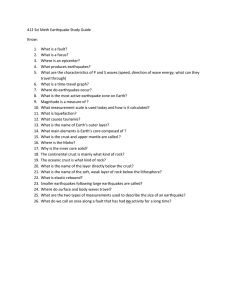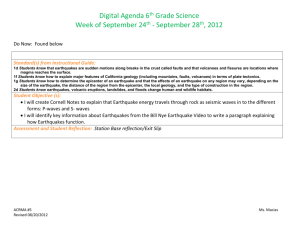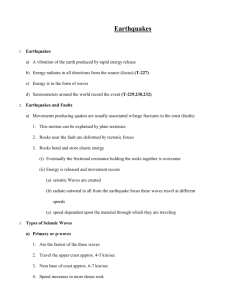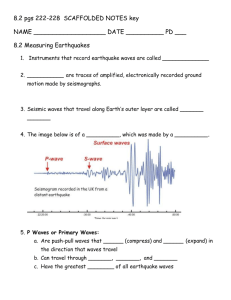Chapter 14 Reading Assignment #1
advertisement
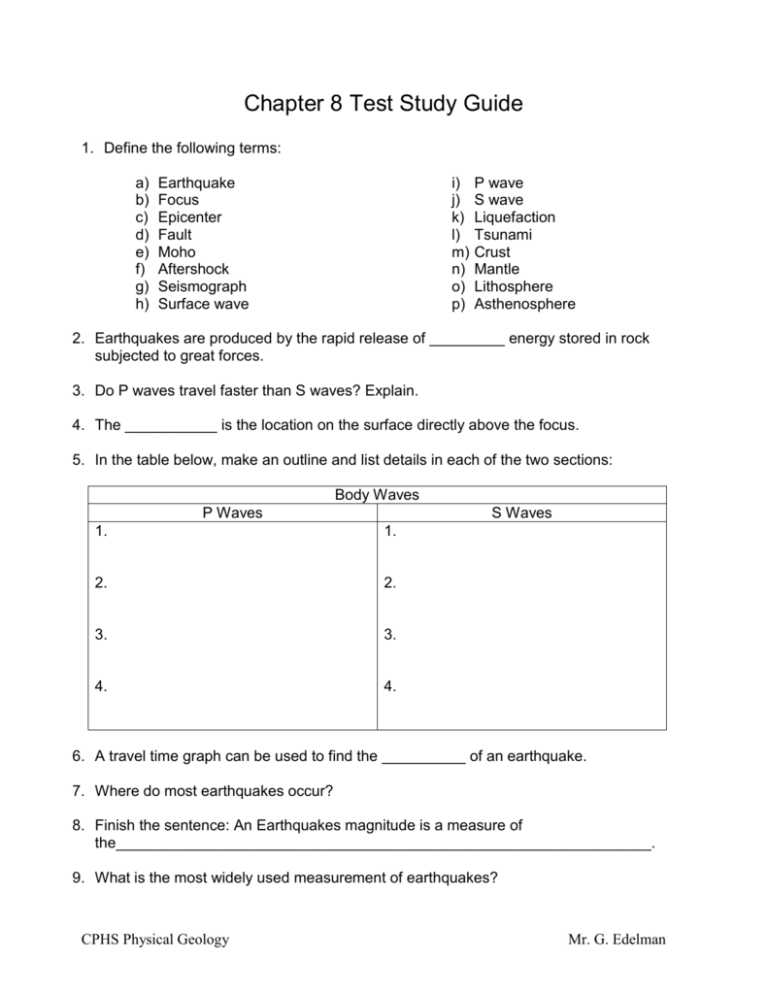
Chapter 8 Test Study Guide 1. Define the following terms: a) b) c) d) e) f) g) h) Earthquake Focus Epicenter Fault Moho Aftershock Seismograph Surface wave i) j) k) l) m) n) o) p) P wave S wave Liquefaction Tsunami Crust Mantle Lithosphere Asthenosphere 2. Earthquakes are produced by the rapid release of _________ energy stored in rock subjected to great forces. 3. Do P waves travel faster than S waves? Explain. 4. The ___________ is the location on the surface directly above the focus. 5. In the table below, make an outline and list details in each of the two sections: Body Waves P Waves S Waves 1. 1. 2. 2. 3. 3. 4. 4. 6. A travel time graph can be used to find the __________ of an earthquake. 7. Where do most earthquakes occur? 8. Finish the sentence: An Earthquakes magnitude is a measure of the________________________________________________________________. 9. What is the most widely used measurement of earthquakes? CPHS Physical Geology Mr. G. Edelman 10. List the factors that are used to calculate the moment magnitude of an earthquake. 11. When does liquefaction occur? 12. Where do Tsunamis occur? 13. How do earthquakes cause landslides? 14. List the 5 main layers of the Earth and state where they are located. 15. The Earth’s core is made of an alloy of _________ and __________. 16. The ____________ is the Earth’s crust and upper mantle. 17. Why is the Earths core a solid? 18. The continental crust is mainly made of __________. 19. Define the elastic rebound hypothesis. 20. The movement that follows a major earthquake often produce smaller earthquakes called _____________. 21. List the two types of measurements used to describe the size of an earthquake. 22. Most earthquakes occur when the ___________ forces on the fault surfaces are overcome. 23. __________ are identified as either S waves or P waves. 24. _________ are not transmitted (pass through) gases or liquieds. 25. ________ often come before a major earthquake. 26. The root words seismos means ________ and graph means ______________. 27. An instrument that records earthquakes waves is a _________________. 28. The relatively soft, weak layer of rock below the lithosphere is the _______________. 29. Where loosely consolidated sediments are saturated with water, earth quakes can have a process known as ______________. 30. A __________ is an area along a fault where there has not been any earthquake activity for a long period of time. 31. Earth’s interior consists of 3 major zones defined by it’s chemical composition. These zones are _________, ___________ and __________. 32. The thin outer layer of the Earth is called the ________. 33. Do 1-10 on page 243 and 1-8 on page 245 “ CPHS Physical Geology Mr. G. Edelman
